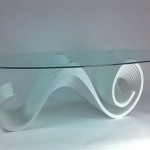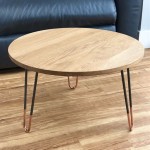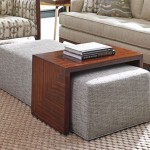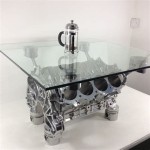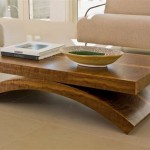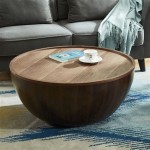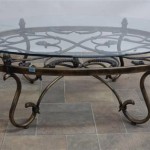```html
What Is The Standard Size Of A Coffee Table Book?
Coffee table books, known for their visually appealing content and ability to enhance a living space, come in a variety of sizes. While there is no single, universally agreed-upon "standard" size, certain dimensions are more commonly encountered than others. The selection of these dimensions is influenced by factors such as printing capabilities, aesthetic considerations, and intended function.
The inherent nature of a coffee table book as a decorative and conversation-starting object allows for more flexibility in size compared to traditional books. Their larger formats often showcase photography, artwork, or design concepts in greater detail. Understanding the typical size ranges can be beneficial for both publishers and consumers seeking to find or create a book that fits well within its intended environment.
Typical Size Ranges
Defining the standard size of a coffee table book requires acknowledging that a range of dimensions exists. The most frequently encountered sizes typically fall within the following parameters:
Small to Medium: Books in this category generally measure between 9 x 11 inches (22.86 x 27.94 cm) and 10 x 12 inches (25.4 x 30.48 cm). These sizes are manageable for browsing and can be displayed on smaller coffee tables or shelves without overwhelming the space. They are suitable for presenting topics like travel photography, biographies with limited image sets, or introductory art collections.
Medium to Large: This encompasses sizes ranging from 11 x 13 inches (27.94 x 33.02 cm) to 12 x 14 inches (30.48 x 35.56 cm). This is arguably the most common size range, offering a substantial canvas for showcasing visuals while remaining practical for handling and display. Subject matter suitable for this size includes comprehensive art surveys, design portfolios, and detailed explorations of specific historical periods or cultural movements.
Large to Extra-Large: These books can exceed 13 x 15 inches (33.02 x 38.1 cm) and can even reach sizes of 15 x 17 inches (38.1 x 43.18 cm) or larger. These are often reserved for limited edition prints, collector's items, or books featuring grand-scale photography or artwork that benefits from the increased size. Due to their size, they may require dedicated display areas or larger coffee tables capable of supporting their weight and dimensions.
It is important to note that these ranges are not definitive, and variations occur based on the publisher's preference, the subject matter, and the target audience.
Factors Influencing Size Selection
The choice of size for a coffee table book is not arbitrary. Several factors play a role in determining the final dimensions:
Content and Visuals: The primary driver of size selection is the nature of the content. Books featuring large-scale photographs or intricate illustrations often require a larger format to allow the visuals to be appreciated in detail. Conversely, if the book relies more on text and smaller images, a smaller size might be more appropriate and cost-effective.
Printing and Binding Capabilities: Printing presses and binding equipment have limitations in terms of the maximum size of paper they can handle. Publishers must consider these constraints when determining the size of their books. Oversized books may require specialized printing equipment, increasing production costs.
Target Audience and Price Point: The target audience and the desired price point also influence size decisions. Larger, more elaborate books typically command higher prices, limiting their accessibility to certain consumers. Publishers must weigh the benefits of a larger format against the potential impact on sales. If a broader audience is desired, a smaller, more affordable size might be a better option.
Display Environment: The intended display environment is a critical consideration. A book designed for a small apartment might be inappropriately sized if it is excessively large. Conversely, a book meant to be a statement piece in a spacious living room might benefit from a larger format. The dimensions of typical coffee tables and bookshelves should be taken into account.
Aesthetic Considerations: Publishers also consider aesthetic factors when determining size. The dimensions of a book can influence its overall visual appeal and how it interacts with its surroundings. The golden ratio and other principles of design may be applied to create a visually balanced and pleasing book.
Common Coffee Table Book Subjects and Their Typical Sizes
Specific subject matters within the coffee table book genre often correlate with particular size ranges. While exceptions exist, certain trends can be observed:
Photography Books: These frequently fall within the medium to large size range (11 x 13 inches to 12 x 14 inches) to showcase the details and artistry of the photographs. Landscape photography books may lean towards the larger end of this range to convey the vastness of the subject matter.
Art Books: Art books, particularly those focusing on painting and sculpture, often utilize medium to large formats to capture the nuances of brushstrokes, textures, and colors. Books covering architecture may tend towards larger sizes to illustrate the scale and design features of buildings.
Travel Books: Travel books can vary in size depending on the content. Books focusing on specific cities or regions might adopt a smaller to medium size (9 x 11 inches to 10 x 12 inches), while those showcasing grand landscapes and diverse cultures could utilize a medium to large format (11 x 13 inches to 12 x 14 inches).
Fashion and Design Books: These books often employ a medium to large size (11 x 13 inches to 12 x 14 inches) to highlight the details of clothing, textiles, and interior design elements. The large format allows for the presentation of full-page images and detailed close-ups.
Biographies and Historical Books: Biographies and historical books that rely heavily on text may opt for a smaller to medium size (9 x 11 inches to 10 x 12 inches), particularly if the image content is limited. However, biographies that heavily feature photographs or artwork may benefit from a larger format.
The consideration of content, visuals, printing capabilities, target audience, display environment, and aesthetic considerations collectively determine the size of a coffee table book, leading to the variability observed within this genre. While no absolute "standard" exists, the ranges discussed provide a framework for understanding the common dimensions and the factors that influence their selection.
```
Design A Coffee Table Book Art Printninja Com

20240703 Julyblogimages V1 Trims Gif

Design A Coffee Table Book Made Simple

Book Sizes And Why They Matter Preflight Books

Oh How To Make A Coffee Table Book And Publish It Design Studio

Oh How To Make A Coffee Table Book And Publish It Design Studio

Book Sizes Selecting The Right One For Your Self Publishing Lab

Oh How To Make A Coffee Table Book And Publish It Design Studio

Book Bound Soft Cover Professional Coffee Table With Frosted Plastic Case Asabook

Oh How To Make A Coffee Table Book And Publish It Design Studio
Related Posts

